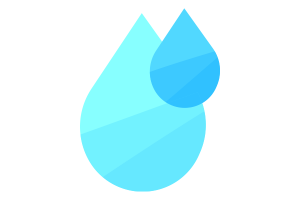Case Study
NY Watershed Agreement
Micro-organisms percolate drinking water
Partners Involved: New York City agencies, the upstate communities, members of the environmental community (foresters, landowners, farmers), U.S. Environmental Protection Agency and other federal agencies, New York State Department of Environmental Conservation (DEC) and other state agencies, the forest ecosystem (flora, fauna, soils)
Type of Partnership: Win-Win for Public and Planet
Partnership Models: Purifier
New-York State benefits from a fresh water source, and species from the forest benefit from a reduced occurrence of floods, soil erosion, nutrient loss and problematic non-endemic invasive species. Moreover, the Public benefits from tourism revenues driven by nature-lovers seeking a scenic and bio-diverse eco-system.
New York’s drinking water supply systems consist of 19 reservoirs and 3 controlled lakes within a 1,972 square mile watershed which has two subregions. The Catskill/Delaware system supplies 90% of the City’s water, benefiting 9 million people with over one billion gallons of a high quality resource that is considered the ”champagne” of drinking water.
A filtration plant would have cost the NY Department of Environmental Conservation $6 – $10bn, with an additional $110m annually for operation and maintenance. Moreover, significantly higher levels of disinfecting chemicals would need to be used to purify the water. By-products from these chemicals are known to pose serious health risks and their use is in fact limited by federal law. Finally, high levels of chlorine are believed to damage the fittings within the water delivery system.
In contrast, although the total cost of watershed programs are difficult to quantify, it is not more than $100 million annually on outreach and education, land management, and partnerships with non-profits and municipalities to maintain the ecosystem’s health. The watershed program would also reduce the occurrence of floods, soil erosion, nutrient loss and protect it from non-endemic invasive species. In exchange, soil micro-organisms filter the water, and NY state also benefits from eco-tourism revenues.
SDGs Targeted: SDG 6 on Clean Water & Sanitation, SDG 15 on Life on Land
Links & Sources:
Case Study
NY Watershed Agreement
Micro-organisms percolate drinking water
Partners Involved: New York City agencies, the upstate communities, members of the environmental community (foresters, landowners, farmers), U.S. Environmental Protection Agency and other federal agencies, New York State Department of Environmental Conservation (DEC) and other state agencies, the forest ecosystem (flora, fauna, soils)
Type of Partnership: Win-Win for Public and Planet
Partnership Models: Purifier
New-York State benefits from a fresh water source, and species from the forest benefit from a reduced occurrence of floods, soil erosion, nutrient loss and problematic non-endemic invasive species. Moreover, the Public benefits from tourism revenues driven by nature-lovers seeking a scenic and bio-diverse eco-system.
New York’s drinking water supply systems consist of 19 reservoirs and 3 controlled lakes within a 1,972 square mile watershed which has two subregions. The Catskill/Delaware system supplies 90% of the City’s water, benefiting 9 million people with over one billion gallons of a high quality resource that is considered the ”champagne” of drinking water.
A filtration plant would have cost the NY Department of Environmental Conservation $6 – $10bn, with an additional $110m annually for operation and maintenance. Moreover, significantly higher levels of disinfecting chemicals would need to be used to purify the water. By-products from these chemicals are known to pose serious health risks and their use is in fact limited by federal law. Finally, high levels of chlorine are believed to damage the fittings within the water delivery system.
In contrast, although the total cost of watershed programs are difficult to quantify, it is not more than $100 million annually on outreach and education, land management, and partnerships with non-profits and municipalities to maintain the ecosystem’s health. The watershed program would also reduce the occurrence of floods, soil erosion, nutrient loss and protect it from non-endemic invasive species. In exchange, soil micro-organisms filter the water, and NY state also benefits from eco-tourism revenues.
SDGs Targeted: SDG 6 on Clean Water & Sanitation, SDG 15 on Life on Land
Links & Sources:
